When I first started considering being active on LinkedIn, I thought growth meant posting every day, chasing likes, and trying to beat the LinkedIn algorithm.
Spoiler: it doesn’t.
As a startup owner, you don’t have time to spend hours on social media platforms hoping for a viral LinkedIn post. You need a LinkedIn growth strategy that feels doable, delivers valuable content to the right audience, and still leaves room for running your business.
I’ve used this approach to help our clients. Some of them have gone from zero to thousands of followers in just a few months, generating real leads without spamming connection requests or relying on expensive LinkedIn ads.
And here’s the best part: you don’t need to master every piece of content creation, automation, or content strategy right away. You can start small, build confidence, and optimize as you go.
I’ll walk you through an eight-step LinkedIn growth strategy, with real examples and “try this” exercises so you can put each step into action right away. By the end, you’ll know how to create high-quality posts your target audience cares about, use LinkedIn to grow your network, and turn visibility into opportunities for your startup.
1. Your point of view is your moat
If there’s one thing I’ve learned about growing on LinkedIn, it’s this: the way you see the world is your biggest competitive advantage. Not how often you publish a LinkedIn post. Not how many likes you get. Not even how fancy your content looks.
Your point of view (the beliefs, insights, and perspectives that shape how you talk about your work) is what makes people stop scrolling and think, “I want to hear more from this person.”
When I work with our interim team, we don’t start with 'How many times should you post?' We start with:
- What do we stand for in our industry?
- What do we disagree with that everyone else seems to accept?
- Why do we care about the problem we solve?
This is the foundation of thought leadership. Without it, your LinkedIn content blends into the background. With it, you’re not just another profile posting tips. You’re someone your target audience remembers and trusts.
For example, my teammate Bojana Vojnović, Content Lead @ HeyReach, didn’t grow her audience by playing it safe. In this LinkedIn post, she shared exactly how she rebuilt her content strategy when her KPIs were tied directly to revenue. She cut out “safe” SEO plays, ditched the brand guide, and doubled down on authentic, ICP-focused content backed by real examples.
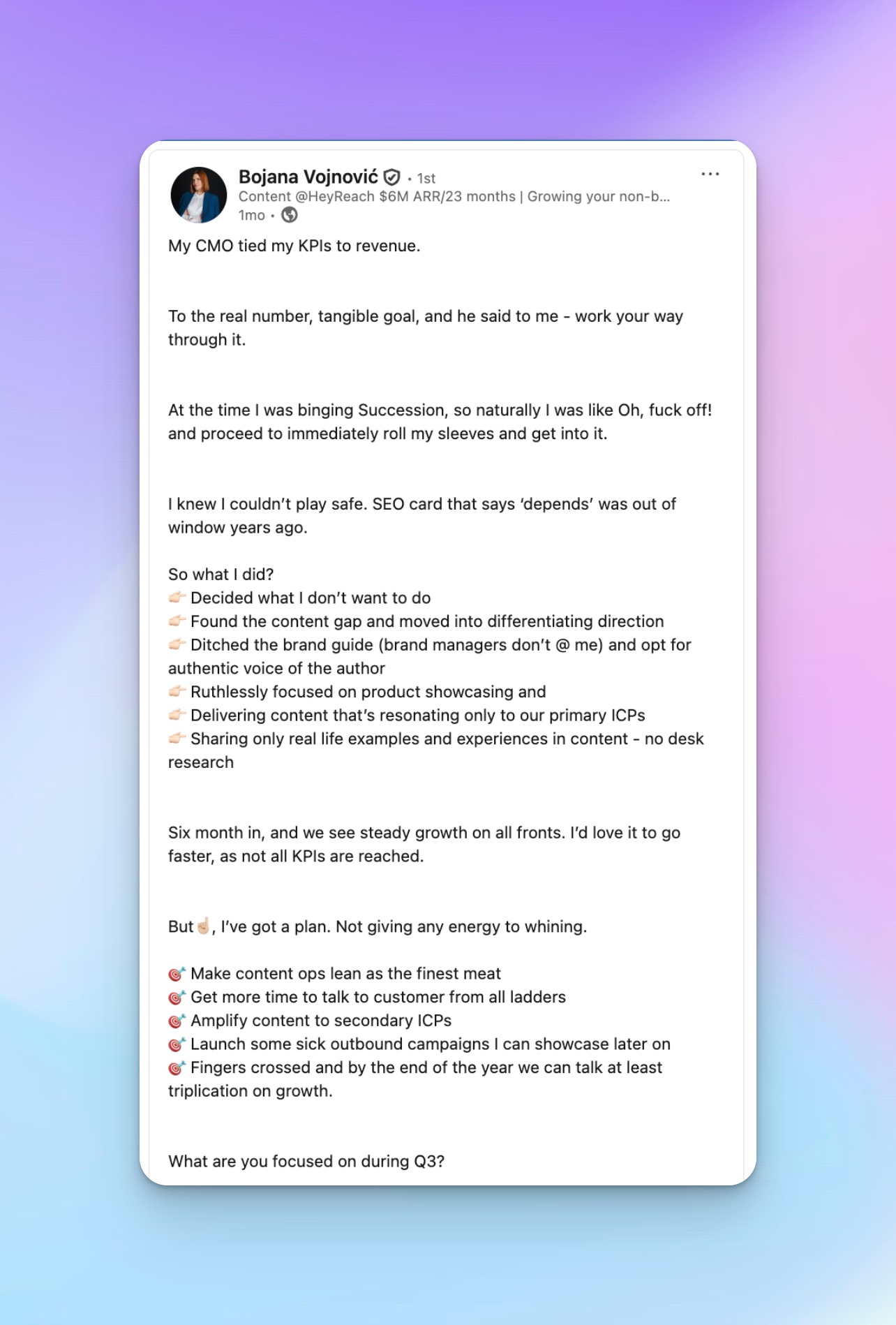
It stood out because she wasn’t just posting marketing tips. She was taking a stance, showing her process, and being specific about what works for her.
That kind of clarity builds trust with the right audience and makes your LinkedIn content instantly recognizable.
Try this exercise:
Write down three beliefs you have that go against the grain of your industry. They can be small (like “vanity metrics are overrated”) or big (like “company pages are dead”). These are the seeds of your content.
LinkedIn is full of generic posts. Your point of view is the moat around your LinkedIn profile. It differentiates you from everyone else and makes your voice worth following.
2. Your content is not for everyone
One of the biggest mistakes I see on LinkedIn is posting for your peers instead of your target audience.
It’s easy to fall into the trap. You share a LinkedIn post full of industry jargon because you know your colleagues will “get it.” The problem? Your colleagues aren’t the ones hiring you, buying from you, or sending you leads.
When I create LinkedIn content, I write for the decision makers, the people who have the problem I solve and the power to do something about it.
I’m speaking their language, focusing on their pain points, and giving them solutions they can picture using right away.
I’ve seen this shift make a huge difference.
Diandra Escobar, Content Marketing Strategist, recently had a post that illustrates this point:
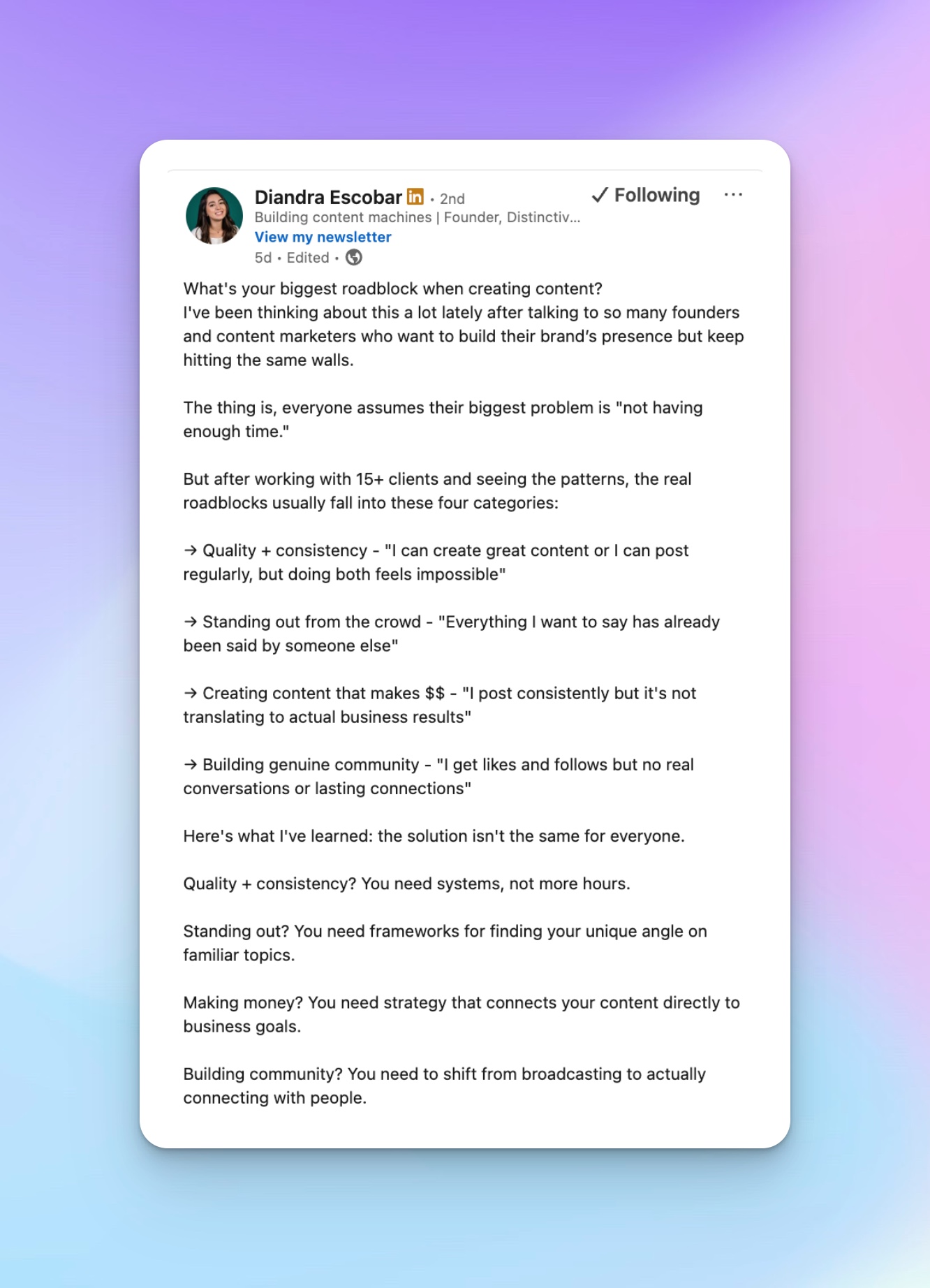
As you can see, she’s not trying to get blanket approval from every social media professional.
She’s speaking directly to founders and marketers who want to build a stronger LinkedIn presence but keep running into the same roadblocks:
- Quality + consistency,
- Standing out,
- Making money from content, and
- Building community.
By calling out these challenges and linking them to specific solutions, she positions herself as a thought leader who understands exactly what her audience is going through.
When you try to please everyone, your posts end up pleasing no one. But when you get specific, you become a trusted voice for the right people. That’s how you build trust and authority over time.
Try this exercise:
Take your last three posts and rewrite the first sentence of each so it speaks directly to a decision maker in your target audience.
Avoid buzzwords and industry slang.
Instead, focus on their problem, their priorities, and how you can help.
This is also where thought leadership comes in, as a way to guide people toward better decisions with the insights you share. When your posts consistently deliver valuable content to the people you actually want to work with, you’ll see more engagement from the right audience and fewer empty likes from people who were never going to buy.
3. Your profile is a landing page
Think of your LinkedIn profile like your storefront window. If someone walks by (or in this case, clicks your name after seeing a LinkedIn post), they’ll decide in seconds whether to stick around.
If your profile doesn’t make it clear who you help and how, you’re losing opportunities without even knowing it.
When I help someone optimize their profile, I look at three things first:
- Headline – Does it clearly say what you do and who you help?
- About section – Is it written for your target audience with proof, results, and a clear next step (CTA)?
- Featured section – Does it highlight valuable content, case studies, or free resources that build credibility?
And don’t underestimate the power of a great profile picture. It’s your first handshake online. A high-quality, approachable photo can help you build trust before anyone even reads your headline.
Take a profile of Nadja Komnenic, Head of Sales @ HeyReach, as an example:
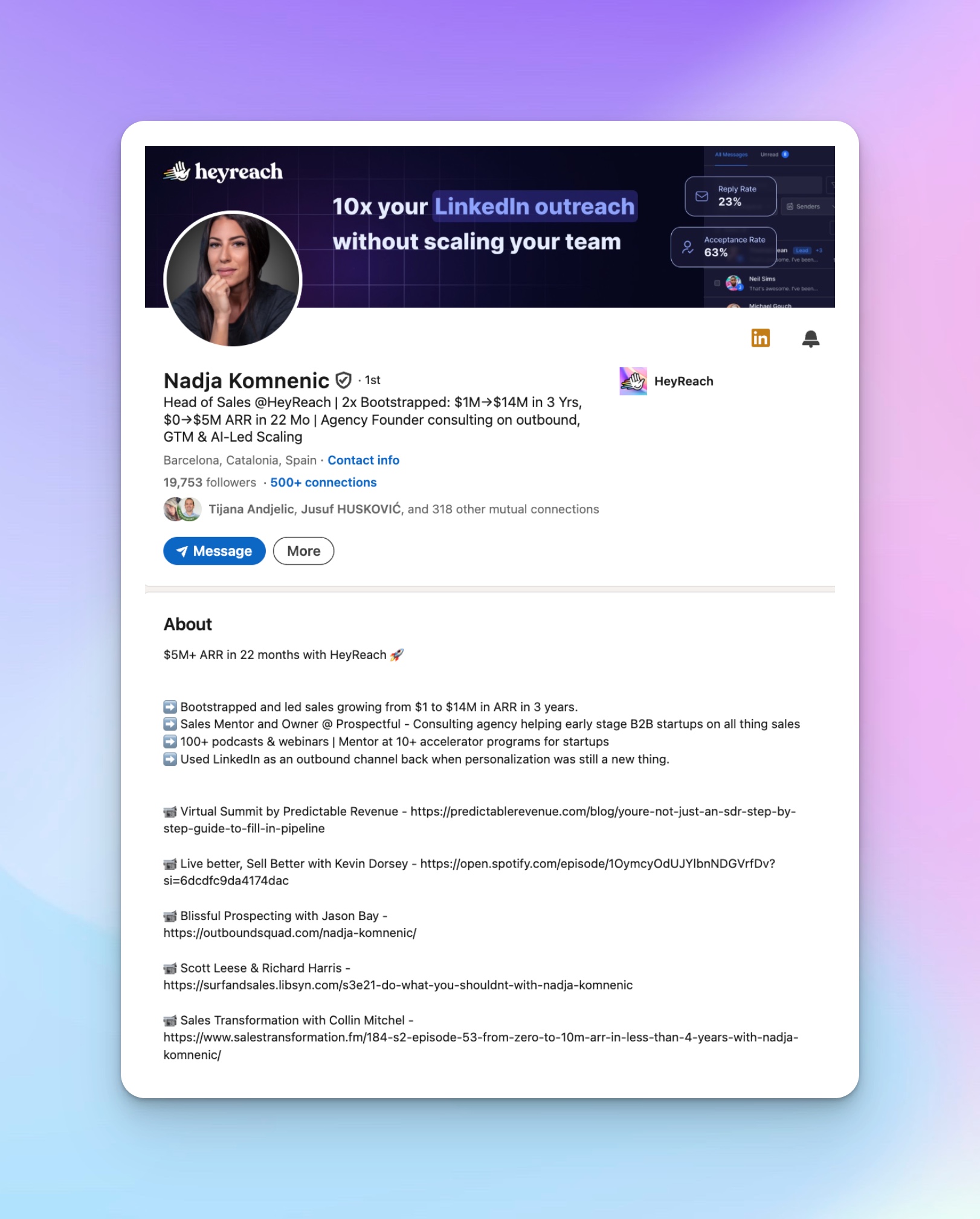
- Her headline clearly communicates what she does and the results she’s achieved.
- The About section backs it up with proof: revenue growth numbers, founder experience, and appearances on 100+ podcasts and webinars.
- Her featured section isn’t random; it points directly to content that builds trust and positions her as a thought leader.
- Even her banner is a mini billboard, instantly telling her target audience why they should pay attention.
That’s exactly how you optimize your LinkedIn profile so it works like a landing page that converts views into conversations.
Try this exercise:
Ask a friend (or someone in your right audience) to look at your profile for 30 seconds. Then have them tell you:
- Who you help
- What problem do you solve
- What they should do next if they’re interested
If they can’t answer all three, it’s time to rewrite and optimize.
Remember: your LinkedIn content earns attention, but your LinkedIn profile is what converts that attention into conversations, leads, and long-term relationships. Treat it like a landing page, because on LinkedIn, it is one.
4. Build your content engine
If you’re coming up with ideas for your LinkedIn post five minutes before you hit publish, you’re making it way harder than it needs to be. That’s not a content strategy, that’s pure improvisation.
What’s worked for me (and for our team accounts) is building a content engine — a repeatable process for turning what you already know into a steady stream of high-quality, valuable content.
Here’s how I look at it:
- Your best ideas are already in your calls, your emails, your Slack messages. You just need to capture them.
- A simple content creation workflow means you never start from zero.
- A mix of formats keeps your feed interesting: text posts, short videos, carousels, maybe even the occasional infographic.
For example, Diandra once worked with a client who thought they “had nothing to post.” We recorded them explaining their biggest client win for two minutes. From that short recording, we pulled three separate posts: one storytelling piece, one thought leadership insight, and one step-by-step tip. That’s the engine at work: turning one conversation into multiple pieces of content.
When I build my engine, I start with a few simple steps:
- Keep a running list of post ideas in a notes app.
- Batch-write once a week instead of daily scrambling.
- Plan posts to cover different formats so I don't repeat the same style over and over.
Try this exercise:
Record yourself explaining one result you got for a client (or yourself) and break it down into three posts:
- One thought leadership post explaining why the result matters
- One practical post walking through the steps
- One visual post (like a carousel or infographic) to make it more shareable
This way, you’re not guessing what to post; your LinkedIn content becomes part of a system. And the best part? A content engine compounds. The more you post with intention, the more your target audience views you as a reliable and consistent voice.
5. Your hook is everything
On LinkedIn, your hook is the first line people see in your post. It’s what makes them stop scrolling or keep going. Without a strong hook, even the most valuable content gets ignored.
A good hook isn’t flashy; it’s rather eye-catching in a way that feels authentic. The best hooks I’ve written or helped clients with do three things:
- Speak directly to the target audience’s pain point or goal
- Promise a clear takeaway
- Make them curious enough to click “see more”
For example, I opened one of my recent posts with:
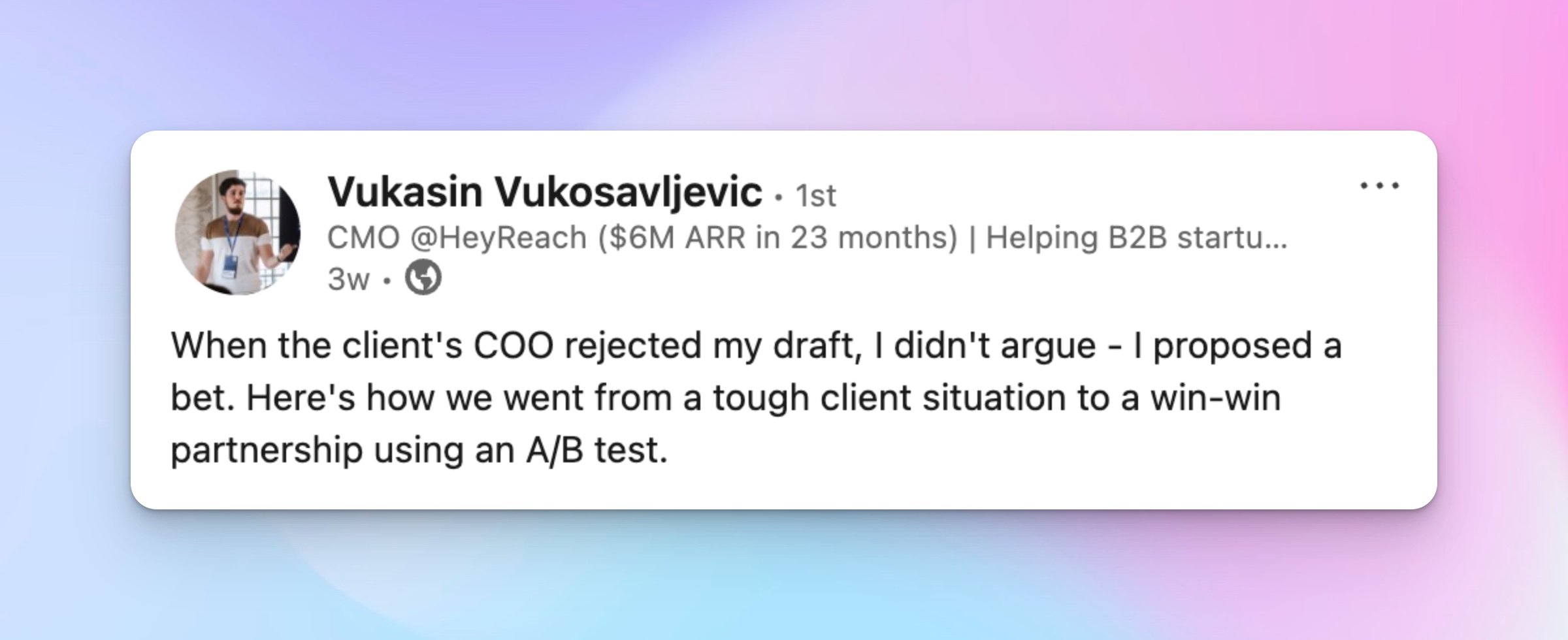
This intro immediately:
- Creates curiosity: The COO rejected the draft: the reader wants to know why and what happened next (a relatable pain point for many in B2B).
- Sets up conflict: There’s a clear tension right from the start (client rejection).
- Promises resolution: “Here’s how we went from a tough client situation to a win-win partnership” tells readers they’ll learn the exact solution.
- Hints at a unique twist: Using an A/B test as the resolution adds intrigue and suggests actionable insight.
When you nail your hook, it’s easier to create the best LinkedIn posts for your niche. Everything after that first line can focus on delivering the value you promised: tips, case studies, examples, or insights that strengthen your thought leadership.
Try this exercise:
Take one of your older posts and rewrite the first line in three different ways:
- One that’s direct and problem-focused
- One that’s a bold statement or belief
- One that asks a thought-provoking question
Test them out in future posts and watch your LinkedIn analytics to see which style your audience engages with most.
Remember: On a busy feed, the hook is the door. If you can get the right people to walk through it, you’re halfway to starting a real conversation.
6. Add a tech layer
I know the word “automation” can make some people nervous. They imagine spammy bots sending hundreds of connection requests or posting generic messages to strangers. But adding a tech layer to your LinkedIn growth strategy doesn’t mean losing the human touch; it means using tools to work smarter, not lazier.
The way I see it, tech should help you:
- Find and connect with the right people faster
- Optimize your workflow so you can focus on conversations, not admin tasks
- Make sure your valuable content reaches more of your target audience
For example, our team uses HeyReach to keep track of LinkedIn analytics like engagement, replies, and reach, but we still write every message ourselves. The tool just helps us see when it’s the best time to follow up or engage with a prospect.
Taking it a step further, Umer Ishaq, GTM Engineer @ HeyReach, even built a workflow where every like or comment on our LinkedIn posts is automatically tracked, enriched with context from our CRM, and routed to the right sales campaign — all without losing the personal, one-on-one touch in the actual conversations.
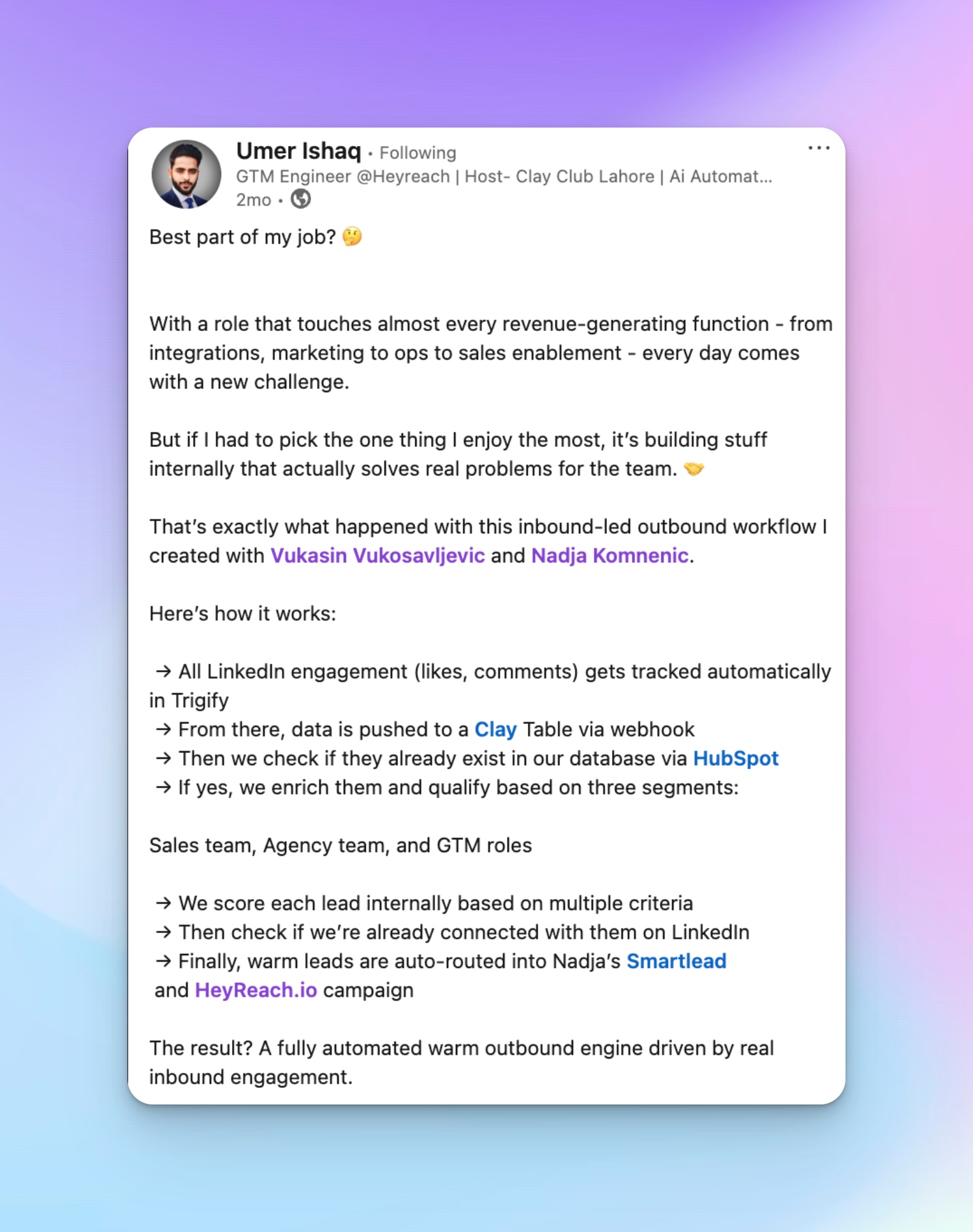
Automation does the heavy lifting behind the scenes, while the relationship building stays 100% human.
Try this exercise:
Make a simple “tech wishlist” for your LinkedIn activity:
- What repetitive tasks are slowing you down?
- What metrics do you wish you could track more easily?
- Where would a little automation save you hours each week?
Then test one small tool that solves just one of those problems, whether it’s scheduling your LinkedIn post, tracking hashtags, or managing social media engagement. Keep control over the personal touch, but let tech handle the busywork.
A tech layer won’t replace you or take away your decision-making power. It will free up your time so you can create better content marketing, have more conversations, and keep showing up for your LinkedIn audience consistently.
7. Leverage the most underrated metric
Most people focus on likes and comments, but one of the most powerful metrics on LinkedIn right now is reposts. When someone reposts your content, they’re telling their network, “This is worth your time.” That’s free brand awareness you can’t buy with ads.
One analysis of top LinkedIn creators found that 67% of reposts performed better than the original post, and 17% of the top-performing posts were reposts. And it’s not just reach; reposts can put you in front of an entirely new LinkedIn audience that’s never seen your profile before.
The key is to create valuable content that people want to share because it makes them look good, helps their target audience, or supports their thought leadership. That could be:
- Actionable checklists or templates
- Short case studies with clear results
- Industry insights that make people feel “in the know”
- Visuals like infographics or carousels that explain a complex topic clearly
For example, Nadja’s post about supporting SDRs’ mental health as a sales manager was reposted 22 times, not because it had flashy graphics or chased a trend, but because it resonated deeply with leaders facing the same challenges.
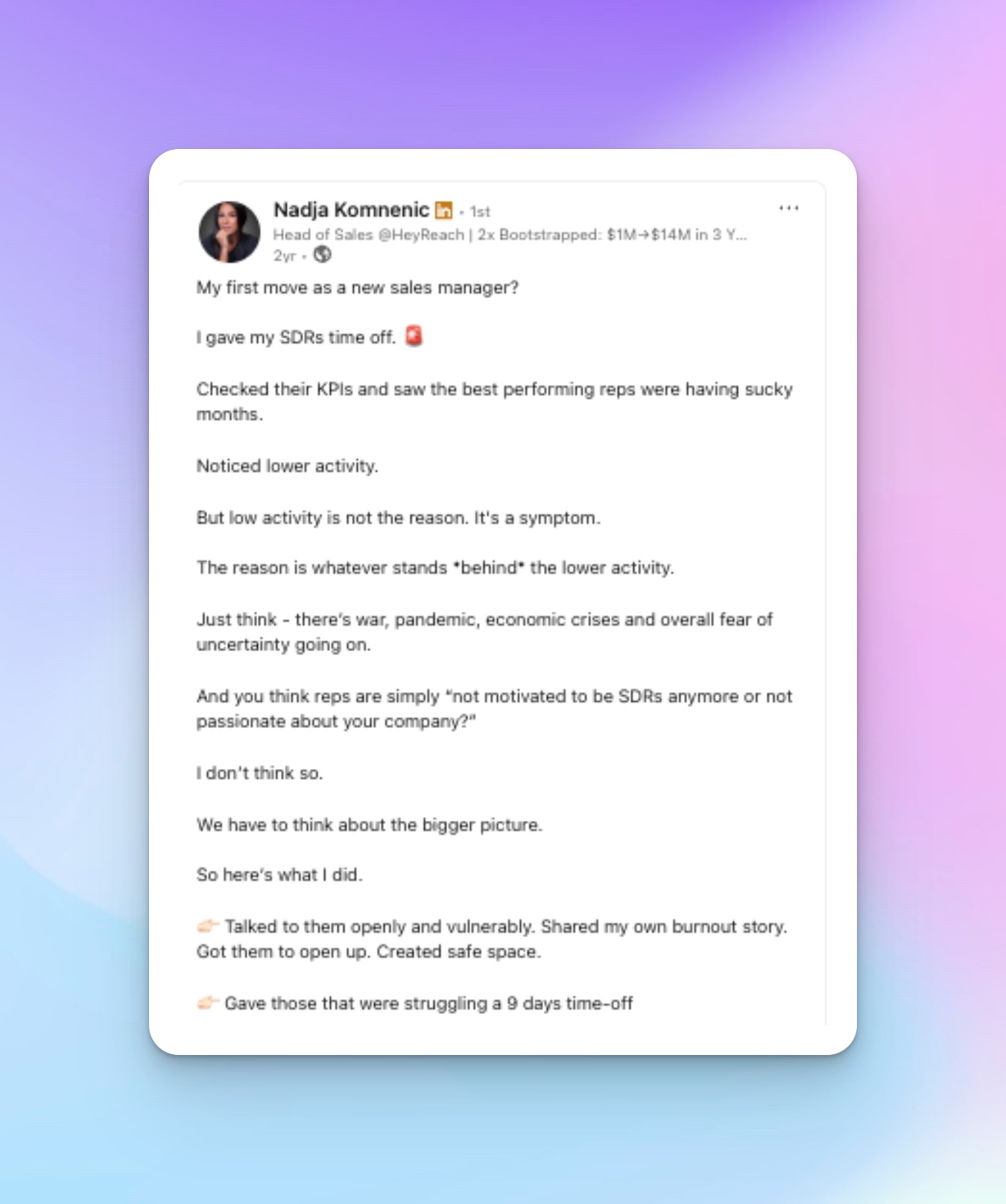
Those reposts put her perspective in front of entirely new audiences, many of whom matched her target audience. The best part? Every repost came with an implicit endorsement: “This is worth your time.”
That’s the kind of reach you can’t buy with LinkedIn ads alone. When your LinkedIn content strategy focuses on creating posts people want to share, you’re building brand awareness, trust, and warm entry points into new networks, all without extra spend.
Try this exercise:
Look at your last five posts and note which ones got the most reposts. What do they have in common? Use that as your content strategy for your next piece: create something designed to be shared.
And don’t be shy about asking for reposts. If you know someone who’d find your content helpful, send them the link and say, “If this is useful, feel free to share it with your network.” You’ll be surprised how often they do.
8. Master the community game
Your LinkedIn growth strategy includes more than your posts. Think of LinkedIn like any other social media space: if you only talk about yourself, people tune out. If you join real conversations, you start building relationships with the right people.
This is where social selling truly takes place, not in cold messages, but in the steady, value-driven interactions that make people want to engage with you. Every comment, reaction, or shared insight is a chance to build familiarity and trust without pushing for a sale.
Here’s the approach I use (and that works for our team accounts):
- Follow 20–30 creators, industry leaders, or potential clients in your niche.
- Comment meaningfully on their LinkedIn posts, not “Great post!” or a thumbs-up GIF, but 2–3 sentences that add value, ask a thoughtful question, or share your own experience.
- Be consistent. Just like in social media marketing, it’s the steady touchpoints that build familiarity.
For example, my colleague, Ilija Stojkovski, CRO @ HeyReach, saw a post breaking down a content orchestration workflow. Instead of a generic compliment, he focused on the core takeaway: that most people overthink their content strategy and chase volume without direction. He reframed the original idea by highlighting the effectiveness of a “limiting funnel” built with intent, which unifies outreach, engagement, enrichment, and positioning into one simple, effective system.
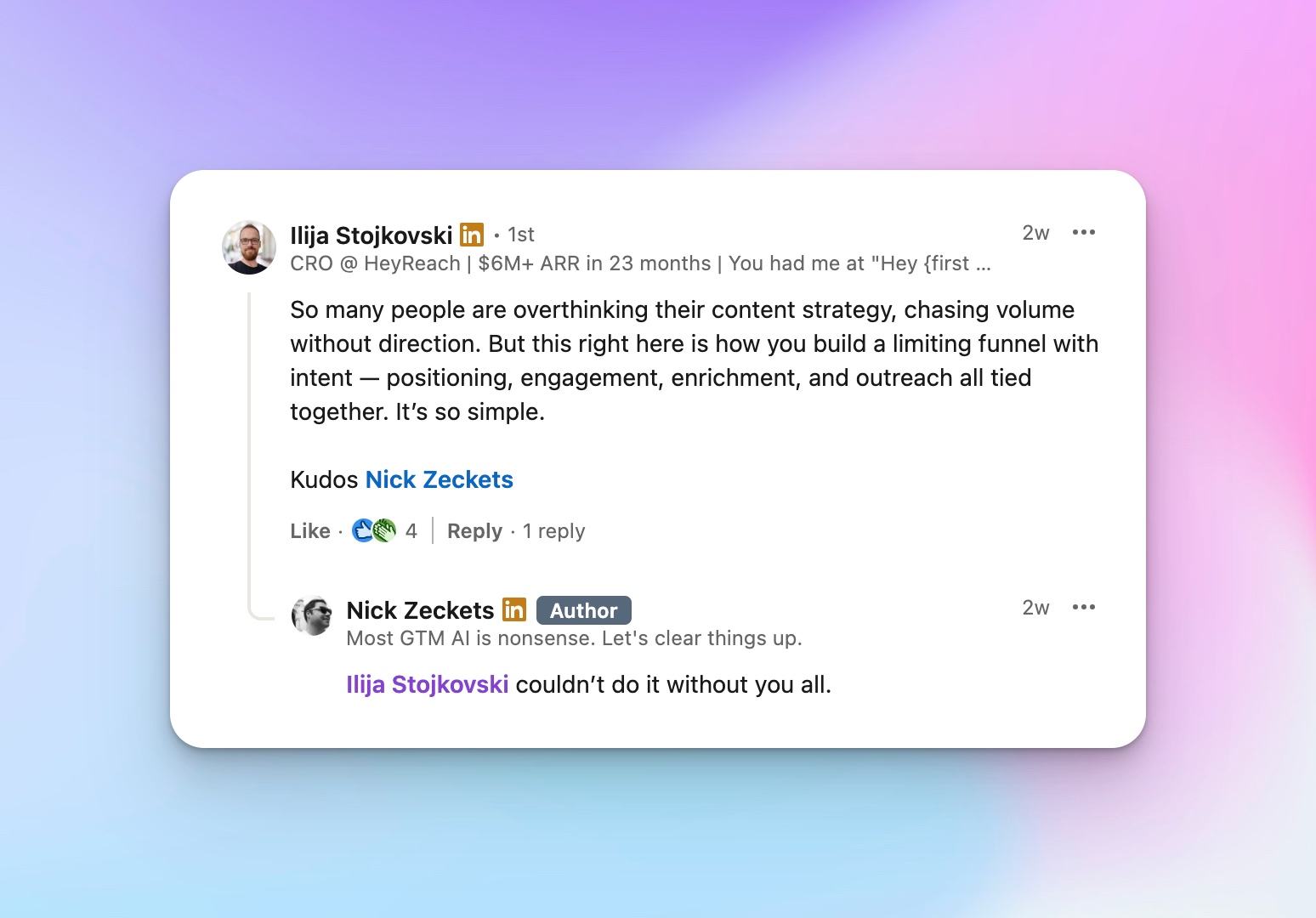
What makes his comment so strong is that it:
- Adds a new perspective rather than repeating what was already said
- Reinforces the main point while introducing related concepts in simple language
- Positions him as knowledgeable without coming across as self-promotional
- Encourages further conversation by making the original author (and other readers) want to respond
That’s the difference between being part of the noise and being part of the discussion; comments that move the conversation forward, not just acknowledge it.
You can also use LinkedIn groups to find niche discussions. Jump into conversations where your expertise is relevant, share resources, or even link to quality content you’ve created if it directly answers a question.
Try this exercise:
Pick three social media platforms you’re active on (LinkedIn should be one) and spend a week tracking where you get the most engagement from conversations.
You might find that LinkedIn comments are delivering more opportunities than any direct outreach you’ve tried.
When you engage consistently, you’re improving your own LinkedIn presence and showing your personal brand in action. And that’s what turns casual connections into lasting relationships — the foundation of what’s often called relationship selling.
You’ve got the strategy. Now make it work.
Everything in this guide works, but only if you put it into practice.
You don’t need to implement all eight steps at once. Start with one or two that feel easiest for you, get comfortable, and build from there.
Business owners who are seeing real traction on LinkedIn aren’t spending all day online. They’ve found a rhythm that fits their schedule, optimized their profile for the right audience, and built systems that keep their valuable content working even when they’re busy running their company.
You don't have to chase the LinkedIn algorithm or copy what influencers do. You need to build a presence that gets you noticed by the people who matter and turn that attention into lead generation, partnerships, and opportunities.
If you’re ready to shortcut the trial-and-error and create a LinkedIn marketing strategy built for your business, let’s talk. Schedule a 1 on 1 strategic call, and we’ll map out exactly how to turn your LinkedIn activity into consistent results.


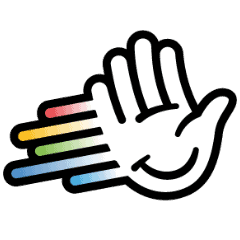
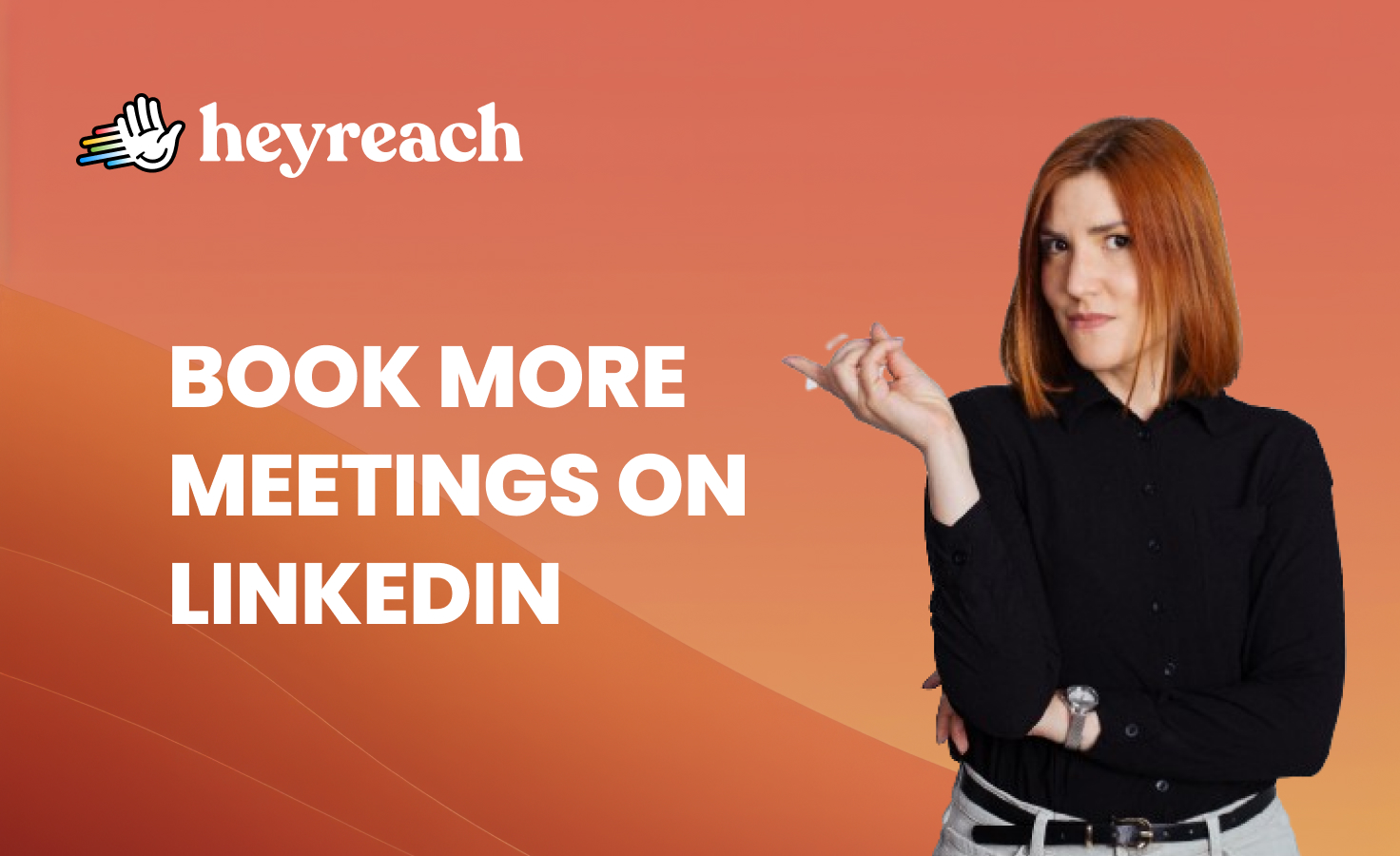



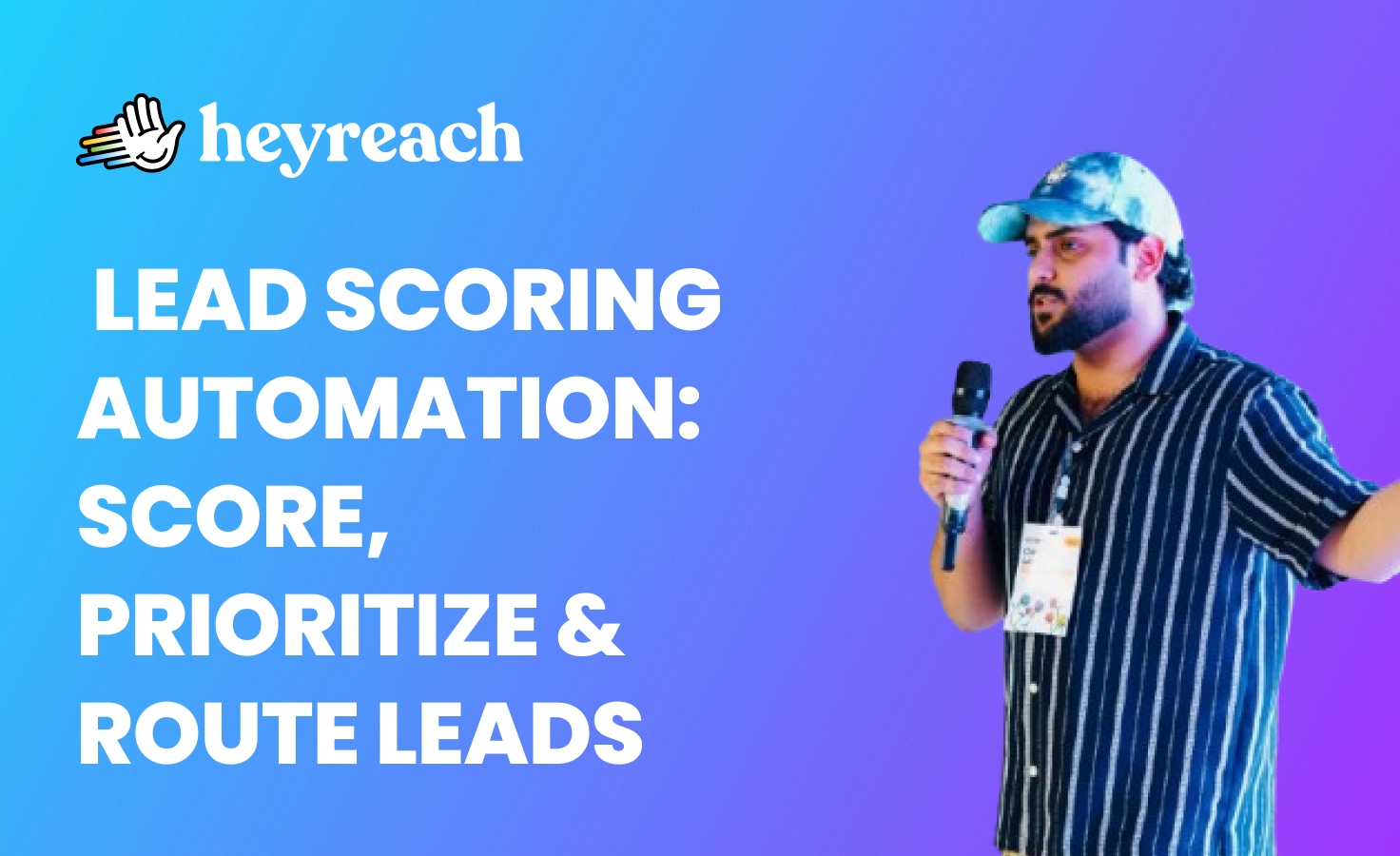

.webp)